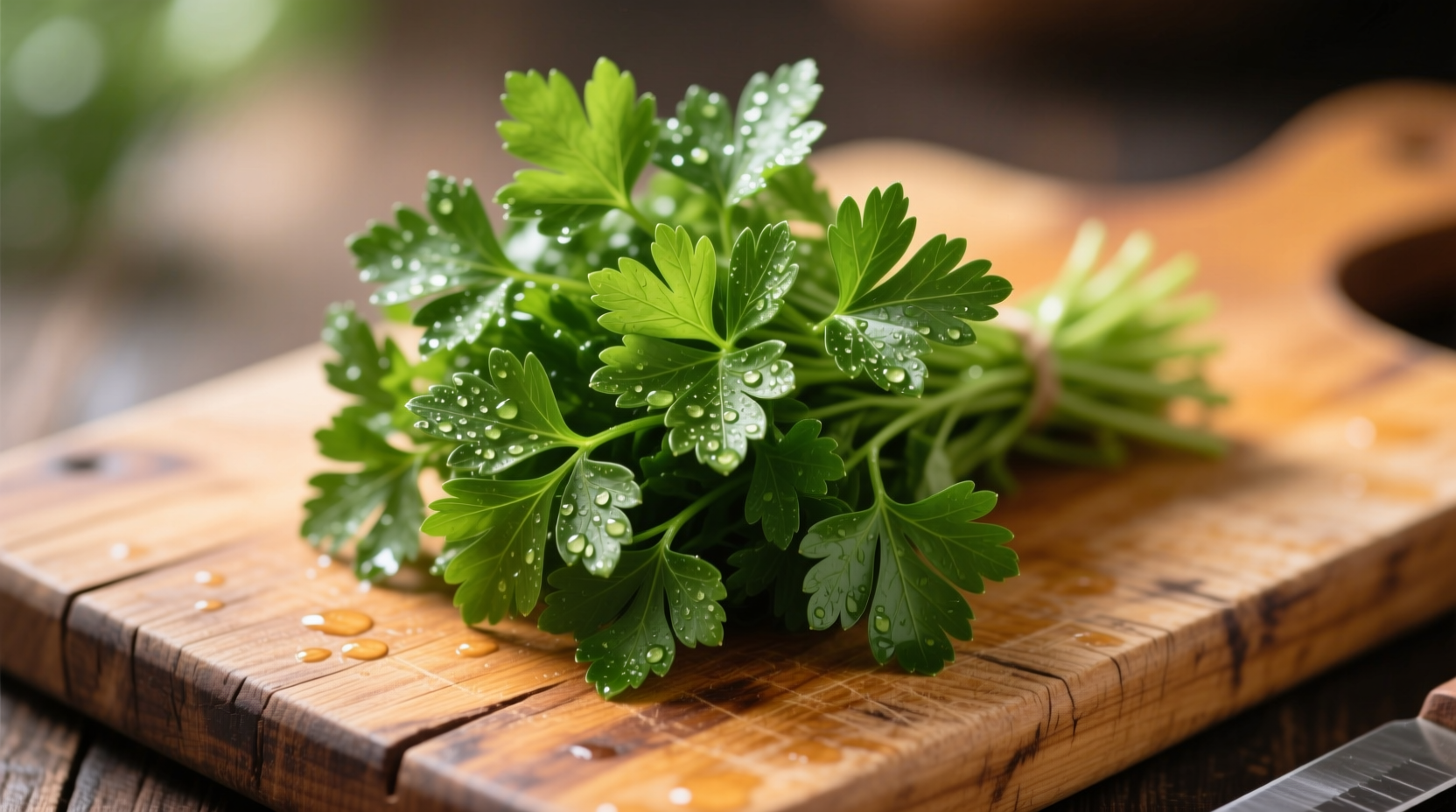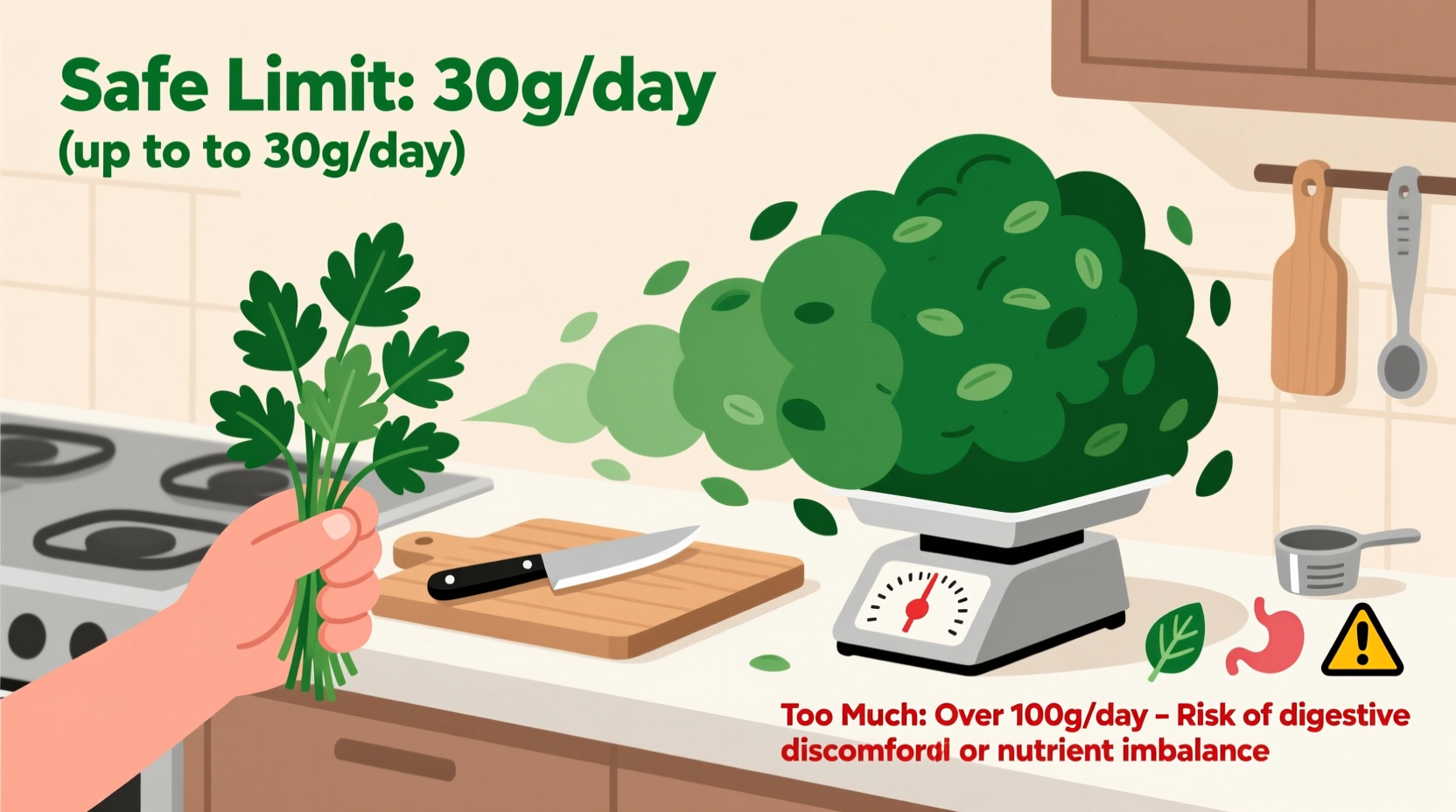Many home cooks wonder where the line falls between generous seasoning and potentially problematic parsley consumption. As a culinary professional who's worked with herbs in both high-end restaurants and everyday kitchens, I've seen countless cases where enthusiasm for this vibrant herb leads to questions about safe limits. The truth is, while parsley is generally safe and nutritious, understanding consumption thresholds matters for both flavor balance and health considerations.
Understanding Parsley's Chemical Composition
Parsley contains beneficial compounds like vitamin K, vitamin C, and antioxidants, but also naturally occurring substances that require mindful consumption. The primary compounds of concern are:
- Apiol - A natural compound concentrated in parsley seeds and oil
- Myristicin - Also found in nutmeg, present in smaller amounts in parsley
These compounds are perfectly safe in culinary amounts but can become problematic when consumed in unusually large quantities over time. According to research published in the Journal of Agricultural and Food Chemistry, parsley contains approximately 0.5-1.5% apiol by weight in its essential oil, with much lower concentrations in the fresh leaves we typically consume.
| Consumption Level | Amount | Frequency | Considerations |
|---|---|---|---|
| Typical Culinary Use | 1-2 tbsp fresh (3-6g) | Per meal | Perfectly safe, adds flavor without health concerns |
| Moderate Consumption | ¼ cup fresh (10-15g) | Daily | Generally safe for most people, provides nutritional benefits |
| High Consumption | ½-1 cup fresh (20-30g) | Daily | Monitor for potential side effects, consult healthcare provider if concerned |
| Excessive Consumption | 2-3+ cups fresh (50-75g+) | Daily for weeks | Potential health risks, especially for sensitive populations |
Health Considerations for High Parsley Consumption
While rare in normal cooking scenarios, excessive parsley intake has been associated with several health concerns based on clinical observations documented by the National Institutes of Health:
Kidney Function Impacts
Parsley acts as a natural diuretic, which is beneficial in moderation but can strain kidney function when consumed excessively. A case study published in Clinical Nephrology reported acute kidney issues in an individual consuming parsley tea equivalent to 10+ cups of fresh parsley daily for several weeks. For those with pre-existing kidney conditions, even moderate increases beyond typical culinary use warrant caution.
Pregnancy Considerations
During my work with culinary nutrition programs, I've frequently addressed concerns about parsley consumption during pregnancy. The apiol in parsley can stimulate uterine contractions when consumed in medicinal quantities. While normal food use (up to ¼ cup daily) is considered safe by the American Pregnancy Association, pregnant women should avoid parsley supplements, concentrated extracts, or daily consumption exceeding 1 cup of fresh parsley.

Practical Guidelines for Safe Parsley Usage
Understanding how to incorporate parsley safely into your cooking requires considering both immediate culinary applications and long-term consumption patterns. Here's what I recommend based on professional kitchen experience:
Daily Consumption Limits
For most healthy adults, consuming up to ½ cup (about 20g) of fresh parsley daily presents minimal risk. This equates to roughly:
- 2-3 tablespoons in morning smoothies
- 2 tablespoons as garnish for lunch
- 1-2 tablespoons incorporated into dinner dishes
The USDA FoodData Central database confirms that this level of consumption provides excellent nutritional benefits without approaching concerning levels of apiol or myristicin.
Special Population Considerations
Certain groups should exercise additional caution with parsley consumption:
- Individuals on blood thinners - Parsley's high vitamin K content (1,230% of daily value per cup) can interfere with medications like warfarin. Maintain consistent intake rather than fluctuating amounts.
- Those with kidney disease - Limit to 2-3 tablespoons daily due to parsley's potassium content and diuretic effects.
- People with liver conditions - Consult your healthcare provider about appropriate limits, as excessive myristicin may affect liver metabolism.
Recognizing Signs of Excessive Consumption
While toxicity from culinary parsley use is extremely rare, being aware of potential symptoms helps you adjust consumption if needed. According to toxicology reports from the National Library of Medicine, symptoms of excessive parsley consumption may include:
- Increased urination beyond normal diuretic effects
- Abdominal discomfort or cramping
- Skin sensitivity to sunlight (photosensitivity)
- For pregnant women: unusual uterine activity
These symptoms typically resolve within 24-48 hours of reducing consumption. If symptoms persist, consult a healthcare professional.
Maximizing Flavor While Minimizing Quantity
Professional chefs have developed techniques to get the most flavor from smaller amounts of parsley, which naturally keeps consumption within safe limits:
- Chiffonade technique - Finely slicing leaves releases more flavor compounds
- Finishing with stems - The thinner stems contain concentrated flavor; mince finely for sauces
- Cold infusion - Steep parsley in cold olive oil overnight for maximum flavor extraction
- Layering technique - Add small amounts at multiple cooking stages rather than one large addition
These methods allow you to achieve vibrant parsley flavor while using 30-50% less herb than traditional approaches, naturally keeping your consumption in the safe zone.
When Parsley Becomes a Supplement
The line between culinary herb and medicinal supplement matters significantly for safety considerations. Parsley supplements, extracts, and concentrated teas deliver apiol levels far exceeding what you'd get from normal food use:
- Parsley seed oil supplements may contain 5-10 times more apiol than fresh leaves
- Medicinal parsley tea preparations often use 1-2 ounces of dried herb per cup
- These concentrated forms should only be used under professional guidance
The European Medicines Agency notes that parsley oil doses exceeding 5mL daily may cause adverse effects, while culinary use of the fresh herb presents minimal risk at normal consumption levels.
Conclusion: Balancing Flavor and Safety
Parsley remains one of the safest and most beneficial culinary herbs when used appropriately. By understanding that normal cooking applications (1-2 tablespoons per serving) pose no health risks while recognizing the thresholds for excessive consumption (2-3+ cups daily for extended periods), you can enjoy this versatile herb with confidence. Remember that individual factors like health status, medications, and overall diet influence your personal tolerance levels. When in doubt about your specific situation, consult with a healthcare provider who understands both nutrition and your medical history.
Frequently Asked Questions
Can eating too much parsley cause kidney damage?
While normal culinary use of parsley is safe for kidney health, consuming extremely large amounts (2-3+ cups of fresh parsley daily) for extended periods may strain kidney function due to its diuretic properties and potassium content. Individuals with pre-existing kidney conditions should limit consumption to 2-3 tablespoons daily and consult their healthcare provider.
How much parsley is safe to eat while pregnant?
Pregnant women can safely consume up to ¼ cup (about 10g) of fresh parsley daily as part of their regular diet. This amount provides nutritional benefits without risk. However, pregnant women should avoid parsley supplements, concentrated extracts, or daily consumption exceeding 1 cup of fresh parsley, as apiol in large quantities may stimulate uterine contractions.
What are the symptoms of consuming too much parsley?
Symptoms of excessive parsley consumption may include increased urination beyond normal levels, abdominal discomfort, skin sensitivity to sunlight, and for pregnant women, unusual uterine activity. These symptoms typically occur only with very high consumption (multiple cups daily for weeks) and usually resolve within 24-48 hours of reducing intake.
Does dried parsley have the same limits as fresh parsley?
Dried parsley is more concentrated, so the safe consumption limits are lower. Generally, 1 teaspoon of dried parsley equals about 1 tablespoon of fresh. Therefore, the safe daily limit for dried parsley is approximately 1-2 teaspoons rather than the 1-2 tablespoons recommended for fresh. The same consumption guidelines apply, just adjusted for the concentration difference.
Can parsley interact with blood thinners like warfarin?
Yes, parsley is extremely high in vitamin K (providing over 1,200% of the daily value per cup), which can interfere with blood thinners like warfarin. If you take these medications, maintain consistent daily intake of parsley rather than fluctuating amounts. Consult your healthcare provider for personalized guidance on safe consumption levels while on blood thinners.











 浙公网安备
33010002000092号
浙公网安备
33010002000092号 浙B2-20120091-4
浙B2-20120091-4